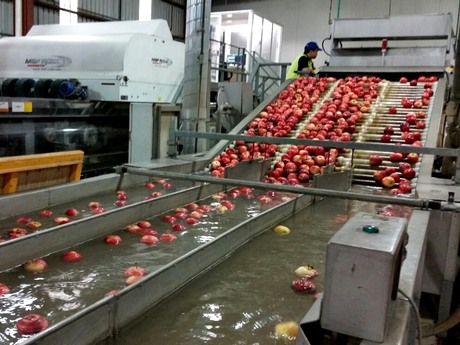Australian apple and pear packhouses have the opportunity help build industry wide knowledge of absolute microbial risks, and a develop a risk assessment model to best manage them.
A short survey about current packhouse practices is being conducted by University of Tasmania microbiologist Elizabeth Frankish, to help identify which forms of specific control are most effective.
"The information gathered will be a measure of food safety system performance," Ms Frankish said. "Reporting on the collated results will allow a packhouse to compare their management strategy, identify their strengths and weaknesses and consider whether changes or improvements are needed."

She added that understanding the effect of packhouse practices in the context of the supply chain is critically important because as potential risk changes, packhouses need to be agile and respond appropriately.
"After a foodborne illness outbreak from caramel apples in the US, the Australian industry became focused on how to prevent a similar event occurring here," she said. "Although historically, apples are a very safe fruit, changes in supply chain management, consumer susceptibility to illness, bacteria themselves and the development of new innovative products that might change inherent apple characteristics could change potential microbial risks.”
 Ms Frankish says the goal is to produce a risk model with a user interface so packhouses will be able to quantify the effect on risk of changing practices within their food safety system, and this will be a powerful tool to demonstrate effective management.
Ms Frankish says the goal is to produce a risk model with a user interface so packhouses will be able to quantify the effect on risk of changing practices within their food safety system, and this will be a powerful tool to demonstrate effective management.
"The need for the research arose from the increasing quality system requirements in the horticulture industry," Ms Frankish said. "Therefore, the research is focused on characterising the hazards specific to orchard and packhouse practices in order to then quantify the food safety risk and determine what management activities are most effective in lowering that risk."
The survey asks about current control activities, microbial testing, and food safety performance indicators in the context of organisation and supply chain characteristics.
"The empirical evidence being gathered in the research is for apple orchards and packhouses," she said. "Whilst the final risk model will therefore make use of apple data, findings from elements within the model will be relevant to any wet packhouse operation that uses similar practices."

For more information, or to take part in the survey, which should only take 10 minutes, email Elizabeth Frankish at elizabeth.frankish@utas.edu.au
